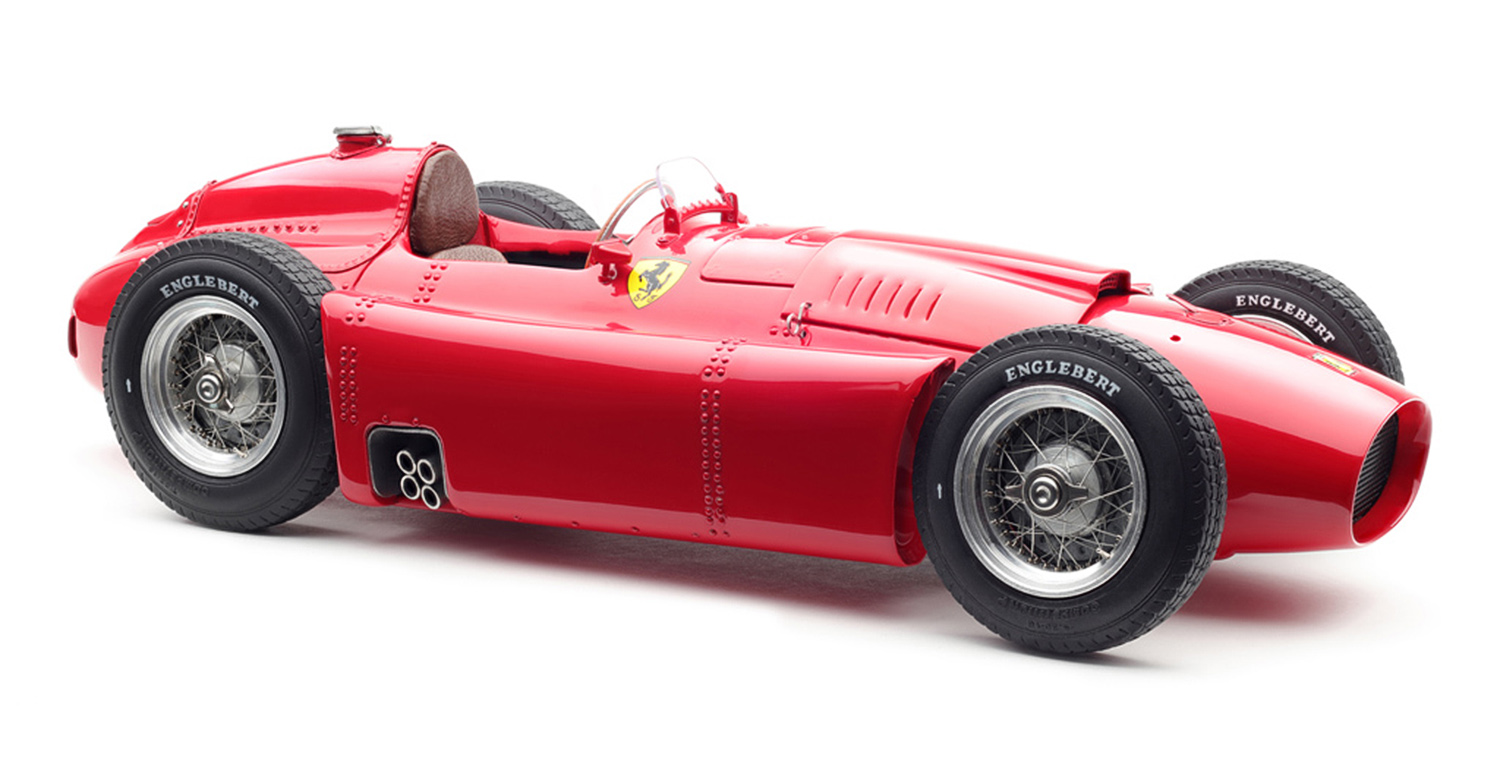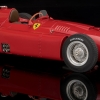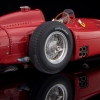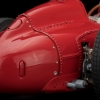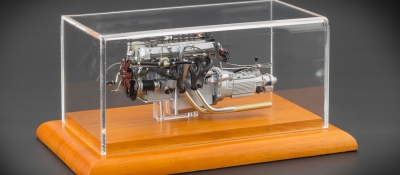CMC Ferrari D50, 1956
After taking over the D50 project from Lancia, Enzo Ferrari was busy turning the newly-acquired Grand Prix racer into a “trump card,” and Scuderia Ferrari was heading for a very successful season in 1956. You are looking at a standard version of the newly-renovated Ferrari D50 with a short nose. CMC will also offer a long-nose version that prevailed at the 1956 German Grand Prix held on the Nürburgring.
$ 600.00
MODEL DESCRIPTION
- Metal precision model hand-built from 1379 parts
- Detachable and lockable engine hood
- Flip-open ventilation lid for the driver´s footwell
- Detail-exact replication of the V8 engine with accessories, pipes and cabling
- Bundled exhaust pipes made of metal
- Triangular front axle with shock absorbers and transverse leaf spring, all made of metal
- Rear suspension with De-Dion-tube, transverse leaf spring, pushrods and friction dampers, all made of metal
- Hand-crafted stainless steel grille
- Oil cooler installed in front of the radiator
- Detailed replication of fuel and oil circulation as well as the cooling system,
- Hinged flip-open fuel and oil filler caps
- Upholstered, leather-covered driver’s seat and head-rest
- Amazingly realistic and perfectly crafted wheels with stainless-steel spokes and nipples mounted on an alloy rim
- Authentically-replicated central locking nuts with right-/left-handed threads
- Elegant finish by hand in the original hue and color
Special feature as accessory: Booster trolley with separate assist start device
HISTORY (ORIGINAL VEHICLE)
Back to Fame and Glory
The tragic loss of Ascari shortly after the 1955 Monaco GP meant, besides exposure to a rapidly worsening finance, an early end to the ambitious F1 project of Scuderia Lancia with its D50’s. It also marked the end of Gianni Lancia’s dream to stay competitive, if not victorious, in the highest form of motorsports.
On July 26, 1955, there was a hand-over of the D50 blueprints, tooling, manufacturing equipments, and lots of parts from Lancia to its most covetous competitor, Scuderia Ferrari.
Ferrari introduced an overhaul of the D50. It brimmed with brilliant renovations, hence putting the new D50 on a path of destiny towards triumph.
Here are the most important improvements:
- The two pannier fuel tanks that were positioned astride the mid-section of Lancia D50 were replaced by a single fuel tank placed directly behind the driver’s seat.
- The bodywork was extended to encompass the two independent spaces once occupied by the pannier tanks, and the more integrated body shell provided better aerodynamics.
- Down below, behind the left- and right-side panels were two bundles of exhaust pipes, each with four pipes that were bent to protrude before the rear wheel, emitting both exhaust and distinctively Ferrari roar.
- The maximum output was increased to 265 hp, and further enhancement was possible by changes of cylinder heads, valve control, crankshaft and pistons.
- The two oil coolers between the pannier tanks and the body shell were abandoned for a tube oil cooler installed in front of the radiator.
- Modifications were introduced to the tubular frame and the suspension systems, including the relocation of the rear transverse leaf spring to a higher horizontal position.
- The tires were switched from the Pirelli brand to Englebert.
Eventually with a total of five Grand Prix victories to his credit, Juan Manuel Fangio was able to finish the 1956 season by clinching his fourth Drivers’ World Championship.
TECHNICAL DATA (ORIGINAL VEHICLE)
- Monoposto built on a tubular frame with free-standing wheels
- 2.5-litre V8 engine as a stressed member of the chassis
- Two valves per cylinder controlled by two overhead camshafts
- Dry sump oil lubrication
- Mixture preparation with four Solex 40 PII double carburettors
- Dual ignition (two plugs per cylinder)
- Five-speed manual gearbox installed behind the driver
- Triangular front axle with shock absorbers, front suspension with wishbones, transverse leaf spring, all made of metal
- Rear suspension with De-Dion-tube, transverse leaf spring, pushrods and friction dampers, all made of metal
| Bore x stroke: | 76 x 68.5 mm |
| Displacement: | 2,486 cc |
| Maximum output: | 265 HP at 8,000 rpm |
| Top speed: | 300 Km/h (depending on ratio) |
| Wheelbase: | 2,280 mm |
| Track front/rear: | 1,270 / 1,270 mm |
| Total length: | 3, 850 mm |
| Total width: | 1,448 mm |
| Total height: | 962 mm |
| Curb weight: | 640 kg |
Downloads
Legal Disclaimer
The use of manufacturers’ names, symbols, type designations, and/or descriptions is solely for reference purposes. It does not imply that the CMC scale model is a product of any of these manufacturers.
The use of racing term and/or driver names, symbols, starting numbers, and/or descriptions is solely for reference purposes. Unless otherwise stated, it does not imply that the CMC scale model is a product of any of these racing teams/drivers or endorsed by any of them.
Related products
Products
Made with Love
Links
Stay in Contact
Shop
You can contact us from Monday – Friday
between 9am to 5pm.

